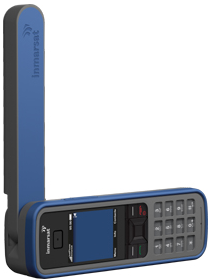International Satellite Services, Inc. (ISS) is based in Southwest Florida. Since our inception in 1995 ISS has been providing alternative, private and independent world telecommunications solutions for business and residential use throughout the globe. We represent all of the major L Band Satellite Constellations including Iridium, Inmarsat, Thuraya, and Lightsquared (MSAT).
As competition continues to drive down the cost of satellite communications equipment and service, technological advancements throughout the industry have greatly improved the features and quality of service available. Many people do not realize that a complete satellite communications system, providing virtually the same features that conventional telephone service offers, can now be installed in a home or office for a fraction of what the same system cost just a few years ago. Portable configurations are available for considerably less. Total air time charges for calls worldwide average far less than $1.00 per minute, again, just a fraction of what they were just a few years ago. We have even lower rates available for high volume customers.
Satellite communication equipment provides worldwide access and operates independently from any local telephone system as they transmit directly from your terminal to the satellite. ISS service is simple. You dial direct and your callers dial direct. Because it is digital you have complete privacy and excellent quality of transmission.
This is not a “cellular phone”, “radio phone” or a “push to talk” system. It is a full duplex system that operates like an ordinary telephone. All of our products are “data capable” so they can be used for e-mail, accessing the Internet, transmitting scanned data, faxing, etc. They can even work through your PBX, providing access to the satellite telephone from any conventional telephone handset in your office. Our Satellite Dispatch Radio service allows multiple satellite telephone users to communicate with each other throughout the Northern hemisphere via personalized “talk groups”. One reasonable monthly flat fee gives you unlimited airtime. We have units designed for marine, land mobile and fixed site installation(live links). We even offer a portable telephone small enough to hang on your belt. The largest configuration, the fixed site unit, including the antenna is still compact enough to fit in a suitcase.
ISS is uniquely positioned in the industry to offer competitive prices on fully digital satellite communications equipment and service. It is simply the most affordable satellite service available.











 The BGAN service provides a remote solution in the Andes for a new prototype body sensor for use in high altitude environments. This data was transmitted via BGAN back to a location in France. This evaluation went on for 3 weeks as these sensors were put to the test on the summit of Mount Aconcagua in the Andes Cordillera, Argentina.
The BGAN service provides a remote solution in the Andes for a new prototype body sensor for use in high altitude environments. This data was transmitted via BGAN back to a location in France. This evaluation went on for 3 weeks as these sensors were put to the test on the summit of Mount Aconcagua in the Andes Cordillera, Argentina.